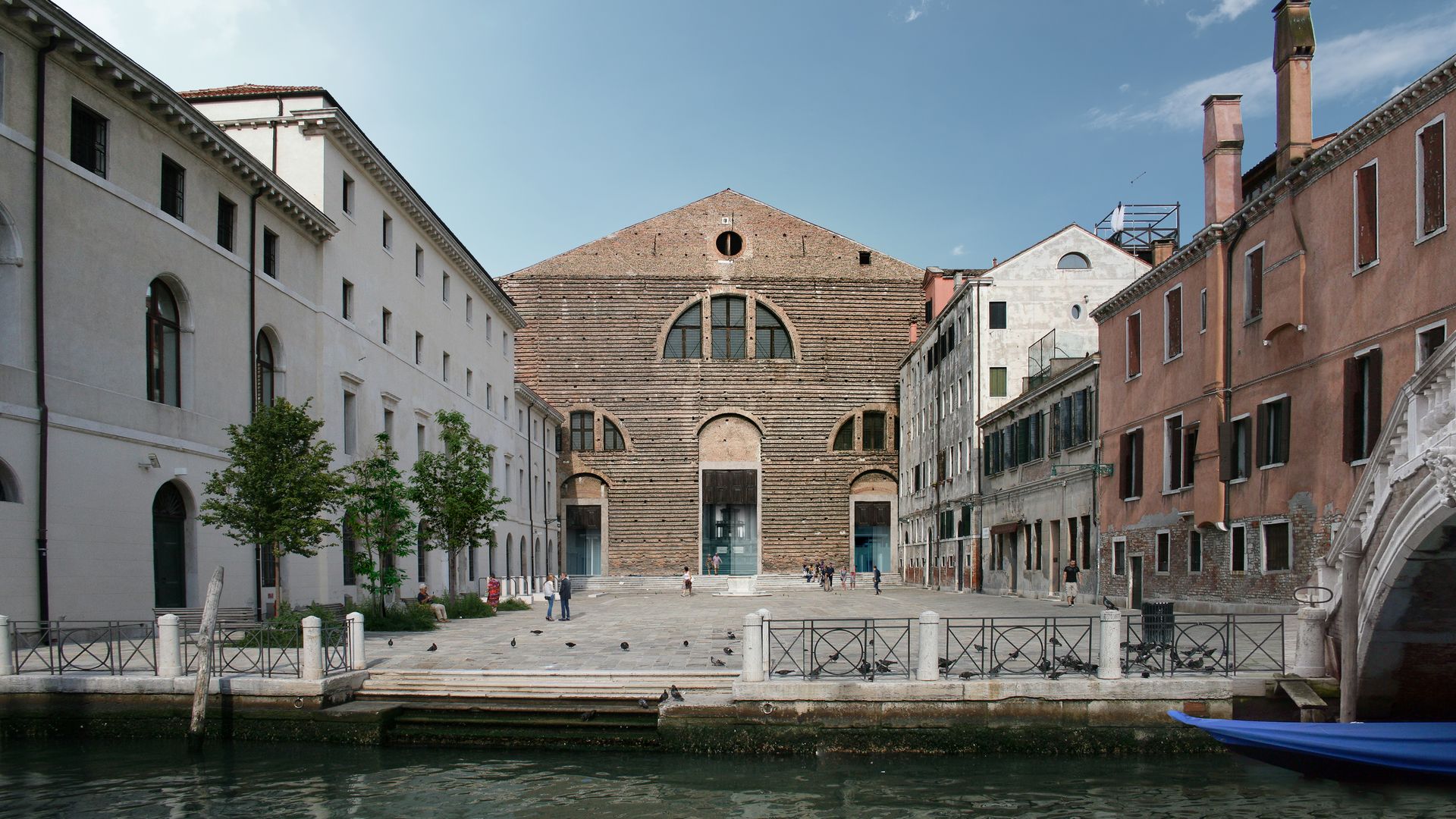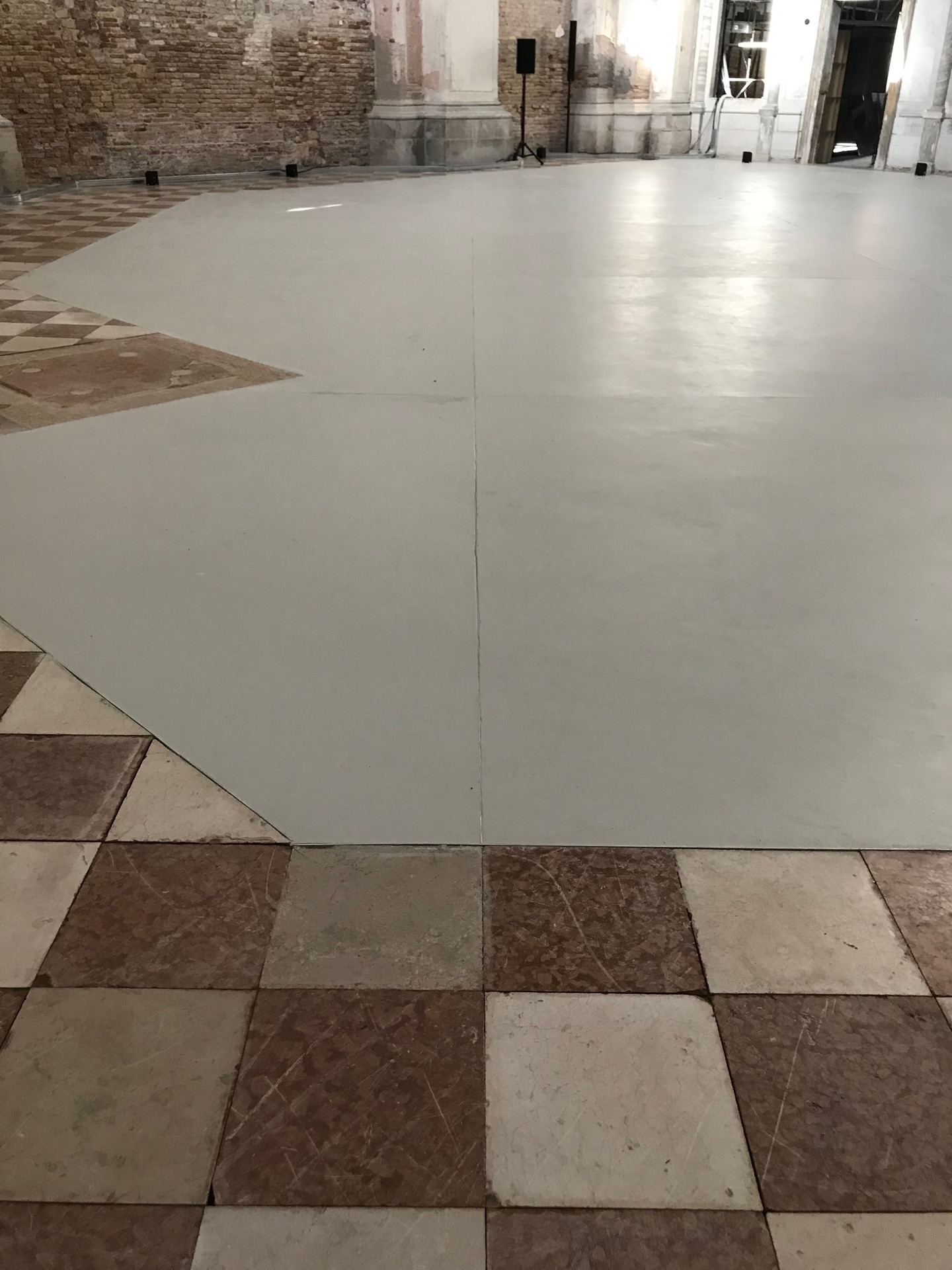About the project
First Phase completed in 2019
OBSERVATORY
The Ocean Space installs itself right where the ocean develops; where it becomes critical; where it shows its richness; and where it is disputed, challenged, and jeopardized. Its architecture is not a closed wunderkammer, but an open observatory in live connection with the ocean, a hub where the diversity that composes the ocean can be reached and explored. Nor is it a container; instead it is an access point where one can sense, present, quantify, discuss, and support the ocean.
IMMERSION
The architectural design of the Ocean Space takes advantage of San Lorenzo’s generous vertical void, its diagonal light coming from upper thermal windows, and its immediate vicinity to maritime waters in order to create a bodily experience of immersion. The space is conceived as empty but dense, crossed by beams of sunlight, like diving into an ocean. The dense watery void is loosely occupied by translucent, blue-ish, floating platforms made of glass. To move inside the space, one must go vertically from platform to platform thought the dense void, as a diver would do.
INTERSECTION
The architecture of the Ocean Space promotes the intersection of art, science, politics, story telling, and activism. The space’s large size allows different activities to happen simultaneously and without division. Contributing to this varied-use space are the furniture, lights, curtains, and the physical dimensions of the space itself. All of this allows the public to mix with itself. It is an infrastructure that promote diverse MODES OF ENGAGEMENT.
Ocean Space’s adjacent areas become a resource for its neighbors. These spaces are conceived as an infrastructure to promote a daily life of environmental engagement. They are equipped as a shared domestic infrastructure with kitchen, coffee makers, rooms for residents, working spaces, access to the Ocean’s Archive, and available rooms for formal or informal events and gatherings. This works as a shared domesticity promoting the encounter of people sharing an interest in engaging environmentally.
The architecture of the OCEAN SPACE is a SYSTEM IN PERMANENT EVOLUTION.
There is no fixed form. It is in a constant state of change. Its architecture is made of modular components. Its platforms can be reconfigured again and again. They can be dismounted and mounted in different compositions to respond to new situations, work, meetings, or formats of action. All these components can travel to the network of locations where TBA21 develops its action: to Jamaica, to London—anywhere the ocean is being discussed.
NODE OF MULTIPLIED CAPACITIES
The architecture of the Ocean Space works as a plug-in system, turning the old space of San Lorenzo into a NODE OF MULTIPLIED CAPACITIES allowing for data to be transferred at any point in space. This ecosystem is where action and reflection can benefit from finding the resources needed to expand and gain reach. This is achieved though the introduction of a network of services integrated in the floating platforms that work as a core to which terminals can be plugged into.
LEVELS OF URGENCY. RENDERING ENVIRONMENTAL URGENCY BODILY SENSIBLE
The different platforms of Ocean Space—in a direct but conceptually, bodily, and politically effective way—bring the urgency and the need to discuss the ocean into the space. This is the “WHY?”. It is a move to render abstract scientific information vivid. The first level, a wooden platform floating 40 cm above the level of San Lorenzo, indicates the estimated sea level rise by 2100 if current carbon emissions remain consistent (Source: Delta Commese). The next level of platforms, at 4.19 m., indicates the sea level height predicted by COP21 for 2215.
THE OCEANIC CHAMBER. A PARLIAMENT FOR THE OCEAN.
The Ocean Space presents a chamber for a heterogeneous constituency of humans and multiple other species to coexist in the ocean and grow a common understanding and cooperation. It is an elevated space from where the vision of the ocean at the horizon can be seen though the thermal windows. An immersive multimedia invasion of domes and the shared table, as a contemporary version of a planetary fresco, will make it possible to bring into the room the rich life in the South Pacific deep sea, the way sharks perceive the long distance they orientate in, the evolution of Raja Ampat coral reefs. With calibrated optical devices, this chamber will make it possible for humans to expand their sensing capacity to gain criticality and to recognize the agency of others. TBA21 will mediate an interspecies cooperation where the role of the ocean as a space of coexistence can be empowered.
Credits
Andrés Jaque / Office for Political Innovation
Team
Team: Roberto González García, Luis González Cabrera, Alberto Heras, Paola Pardo-Castillo, Sara Ayoub, Ayushi Drolia, Inês Barros, Elise Durand, Melodi Esgin, Bansi Mehta, Laura Mora, Nikhil Parkhiya, Clément Vergé.
Architect in Venice
Cataruzza Millosevich Architetti Associati, Fabrizio Cataruzza
Project Manager
David Hrankovic
General Contractor
M+B Studio, Troels Brunn, Luca Delise
Engineers
F&M Ingegneria, Federico Zaggia
General Procura
Marco Franco








